“The physical demands of defensive tactics and arrest and control require a broad-based general adaptation. This is not the domain of the specialist. Survival will be awarded on average to those men and women who’ve secured the most generalized physical capacity. They will, by necessity, be strong, fast, quick-reacting, accurate, and flexible. This broad adaptation is well developed, by design, within the CrossFit arena.”
— CrossFit Founder Greg Glassman
Traditionally, physical training at police academies across the United States has been specialized and narrowly focused to prepare for a predictable test. Picture a military boot camp in the ’90s. Run, drop to the ground, and perform as many push-ups as you can, then do as many sit-ups as you can. That is what the Physical Ability Test (PAT) will ask of you.
In the field, it’s anything but predictable.
A 2023 study, “Evolution of Physical Training in Police Academies: Comparing Fitness Variables,” retrospectively compared the impact of three different exercise focuses on police academy cadet fitness testing variables: calisthenic training, functional fitness training, and strength training.
The study authors came to the conclusion that “tactical strength coaches should look to incorporate a training program that helps recruits maximize their abilities on all tested parameters and documented job demands without overly focusing on gains in one area unless dictated by the physical job demands of the roles trainees plan to occupy. Further, instilling lifelong skills and passion for physical activity and exercise in recruits may mitigate chronic disease and strengthen positive mental health coping mechanisms.”
In other words, physical training at police academies should implement a program that creates well-rounded athletes who are prepared for the unknown and unknowable elements of their jobs and will promote ongoing exercise habits that will help fight chronic disease.
Derek Ray of the Florida Police Corps in Jacksonville, Florida, was the first to officially implement the CrossFit model in an academy setting, to great success. We are also seeing the same results at the police academy of the New Hampshire Police Standards and Training Council, the only law-enforcement training facility in the state.
Every cadet trains CrossFit at the official on-site CrossFit affiliate — CrossFit NHPST — to prepare for the PAT and life in the field. That means every law-enforcement officer in the state of New Hampshire since 2016 has done CrossFit.
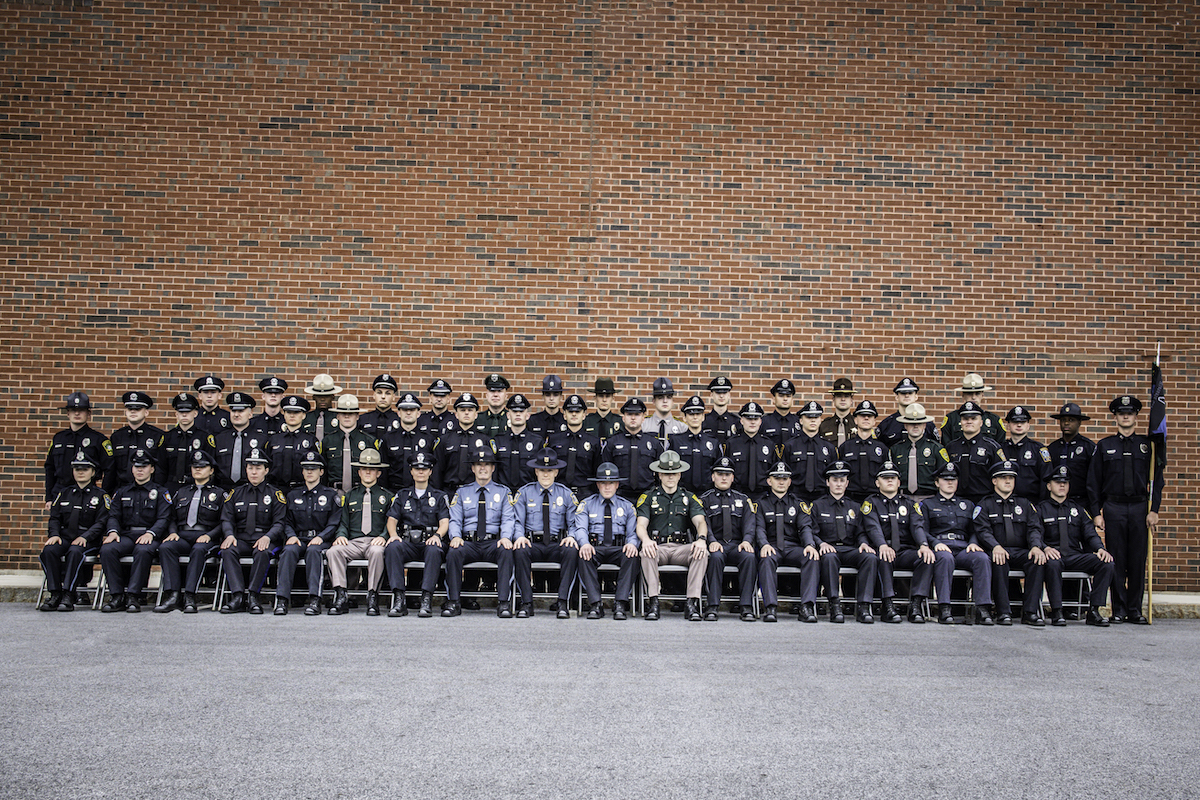
188th Full-Time Academy Class | Photo courtesy of Cpt. Adam Hawkins of the NH Police Standards and Training Council
The Start of CrossFit NHPST
Meet Capt. Adam C. Hawkins, Commander of the Bureau of Professional Development and Technology at the New Hampshire Police Standards and Training Council. He is a police officer of 20 years and a CrossFit Level 2 Trainer.
In 2018, Hawkins began working in the Recruit Training Division at the New Hampshire Police Academy, and with two decades of experience in the field, he knew the importance of focusing on officer wellness within the academy.
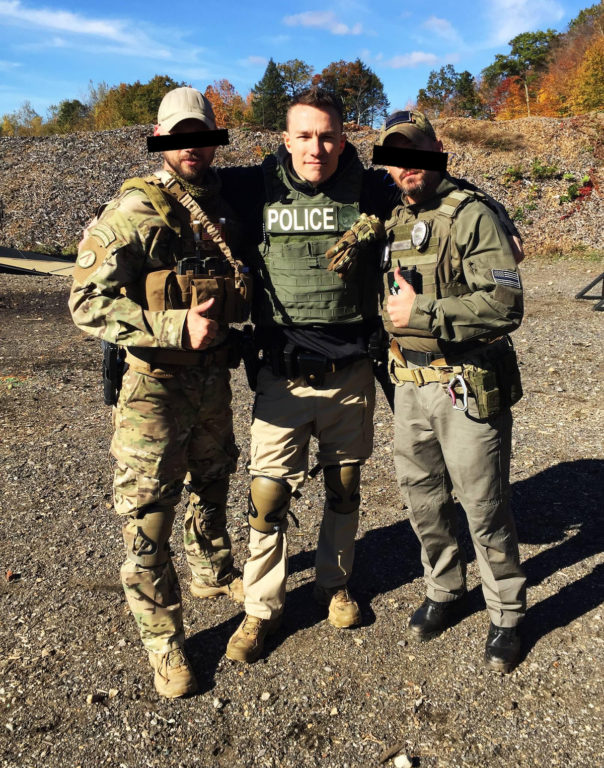
Adam Hawkins (middle) | Photo courtesy of Hawkins
Physically, officers need to be able to get out of a squad car swiftly, or run quickly and restrain a person under fatigue. Officers are also often exposed to traumatic events and need to understand how to take care of their mental health. Socially, it is important officers have a support system and a sense of belonging to improve resiliency.
“Being a police officer, you are going to experience things that the average person won’t experience and sometimes at a more frequent weight,” Hawkins said. “We can give (officers) better equipment, we can do all of these things. But what else are we doing? I found that in CrossFit.”
A CrossFit athlete since 2013, Hawkins likes to think of himself as a “CrossFit historian.” He has read all the CrossFit Journal articles dating back to 2002. He knew CrossFit was the cure for the world’s most vexing problem — chronic disease. But for law-enforcement officers, CrossFit was a pathway to total wellness.
The academy had already been implementing CrossFit-style workouts since 2016, so Hawkins had proof CrossFit was transforming recruits into officers who were fit enough to succeed in the field, officers who were able to overcome mental challenges and stress, and officers who were bonding with their community.
But Hawkins wanted to take it a step further and open an official CrossFit affiliate at the academy. He approached leadership and pitched the idea.
“We do this already,” Hawkins told his superiors. “CrossFit has supported law enforcement for a long time. … Why don’t we reap the benefits of affiliation?”
Hawkins’ pitch was approved unanimously by the New Hampshire Police Standard Training Council — the board that oversees the organization — and CrossFit NHPST officially affiliated on June 28, 2022.
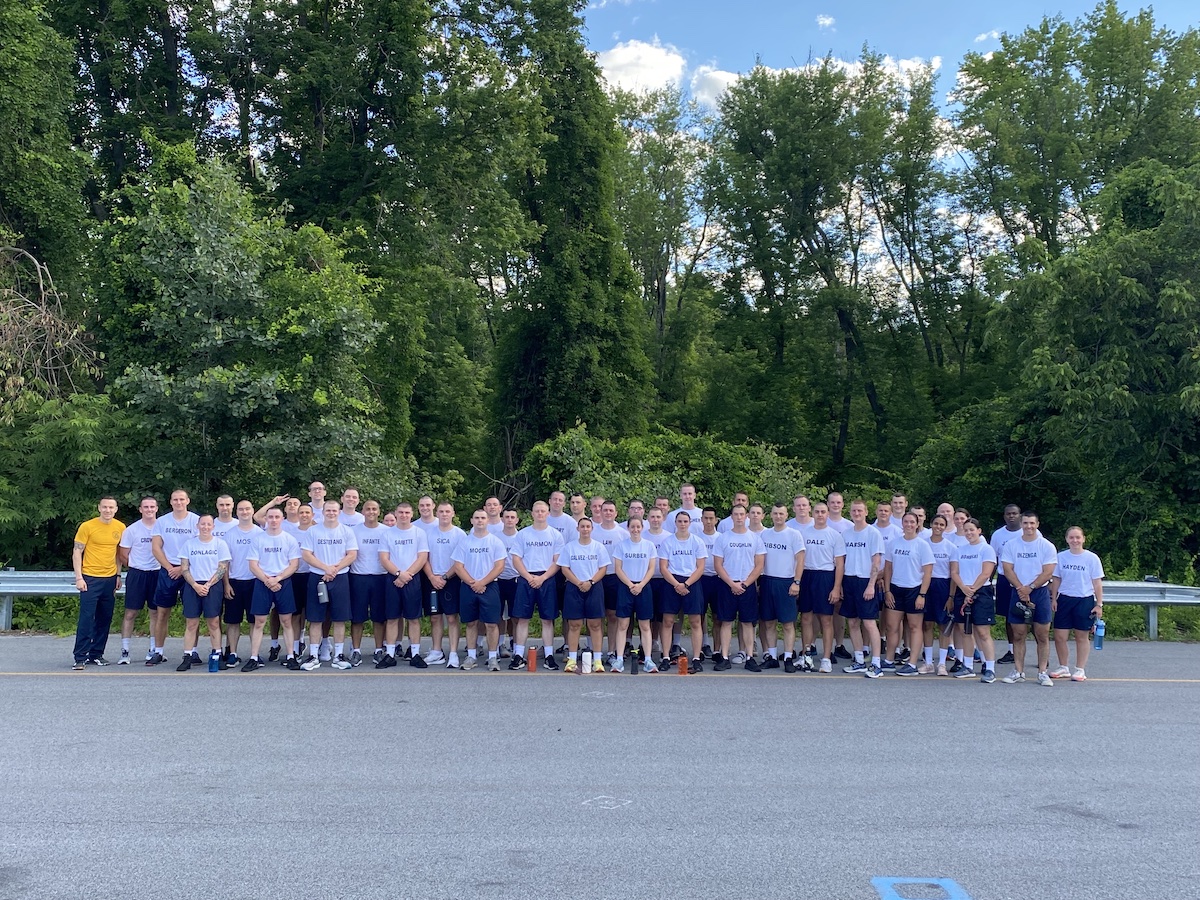
The first class at CrossFit NHPST | Photo courtesy of Hawkins
Preparing for the Field
To make it to the police academy in the state of New Hampshire, you first have to get hired by a law-enforcement organization. Then you have to pass the Physical Agility Test, oral board, polygraph test, background investigation, psychological exam, and medical exam. Only then can you continue to the police academy.
“It doesn’t matter what uniform you wear. State troopers, deputy sheriffs, local municipal, marine patrol, fishing and game, whatever it is, whatever uniform you wear, we all go to the same place (the New Hampshire Police Academy),” Hawkins said.
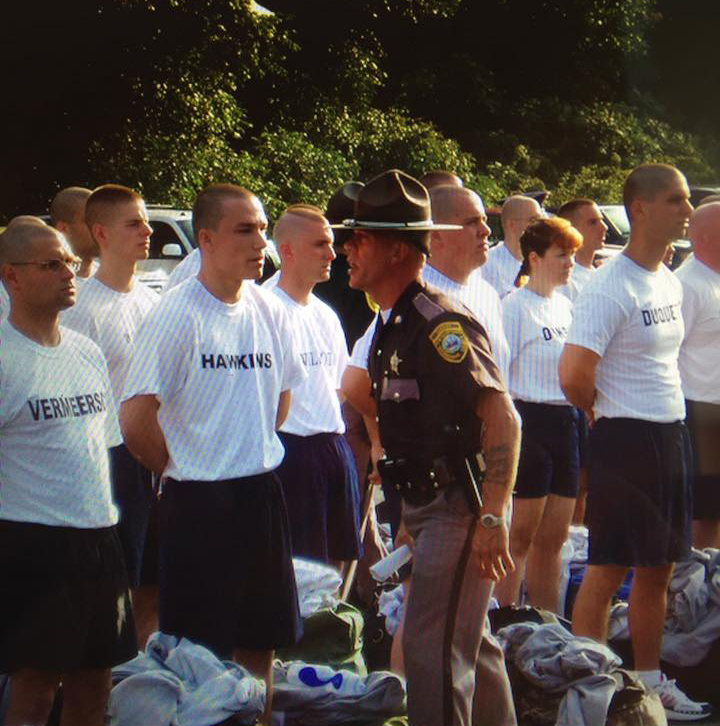
Hawkins at the New Hampshire Police Academy in 2004 | Photo courtesy of Hawkins
At the academy, cadets undergo 16 weeks of training. They are put through standard written tests, practical tests (defensive tactics, firearms, driving, etc.), and scenario-based training.
Cadets must also pass an entry, mid-term, and final PAT, placing within the 35th percentile. The test standards are dependent on age and sex. The current standards for males aged 18-29 are 27 push-ups in a minute, 37 sit-ups in a minute, and a 1.5-mile run in under 12:53. These standards are lowered proportionately for women and as officers age every 10 years.
CrossFit NHPST runs classes as the physical training at the academy, preparing cadets to pass the PAT and for the job’s physical demands once they graduate.
The affiliate runs two classes in the morning, each with 40 cadets, one at 6 a.m. and one at 7 a.m. on Tuesdays, Wednesdays, Thursdays, and Fridays. The coaching staff consists of four academy staff members: Lt. Mathew Terry (CF-L2), Lt. Erin M. Minihan (CF-L1), Lt. Miljan Lacmanovic (CF-L1), and Hawkins (CF-L2).
Since adopting CrossFit at the academy, Cadets have placed in a much higher percentile in the PAT than when they entered the academy. In the last 20 academies, cadets increased their sit-ups by an average of 3.1, push-ups by 12.2, and shaved 43 seconds off of their 1.5-mile run by the end of the 16 weeks.
Below is a graph of pre-academy PAT scores vs. final PAT scores.
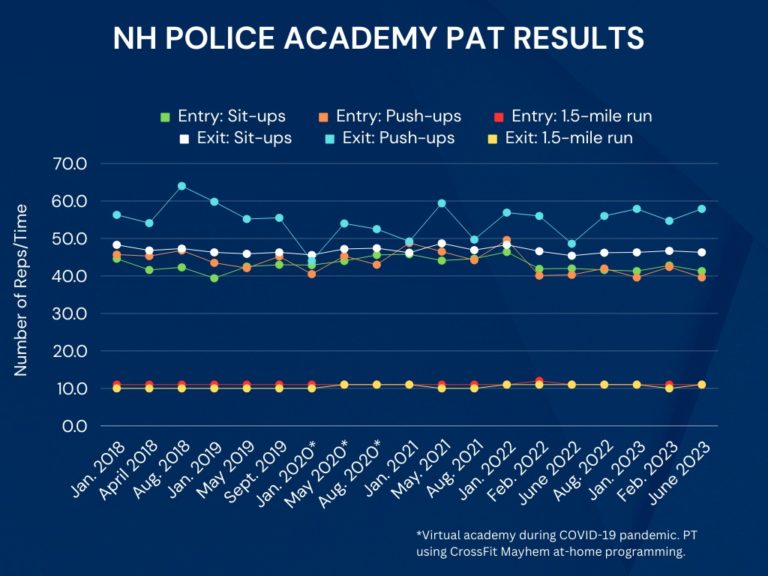
“I can tell you, I went and looked back at the last 10 academies. Injury was basically non-existent. That goes back to our priority when it comes to wellness,” Hawkins said. “When I was doing PT way back in the day, we would run run run run run run, we would do push-ups, and that’s basically it.”
But it’s not just about how many sit-ups and push-ups the officers can do or how fast they can run. It’s about how swiftly they can jump over a fence and keep running. It’s about carrying a 200-pound unconscious man out of the woods to safety. It’s about standing outside in the cold for three hours at an accident. Through CrossFit, law-enforcement officers are training their bodies and minds to handle anything thrown at them in the field.
Most importantly, it’s about maintaining officers’ physical and mental wellness so they can return home each night safely.
“I’ve been in all sorts of different experiences … I’m fighting with somebody, and then I get hit down. … But I’ve been under a front squat, tired and fatigued, right? We’re fighting with this guy, and to be able to fight through that, having a willingness to grind, and to not give up … that’s been invaluable,” Hawkins said.
Although police officers aren’t offered formal fitness instruction after the academy, New Hampshire Police Academy graduates can find a local CrossFit affiliate and continue training just as they had in the academy.
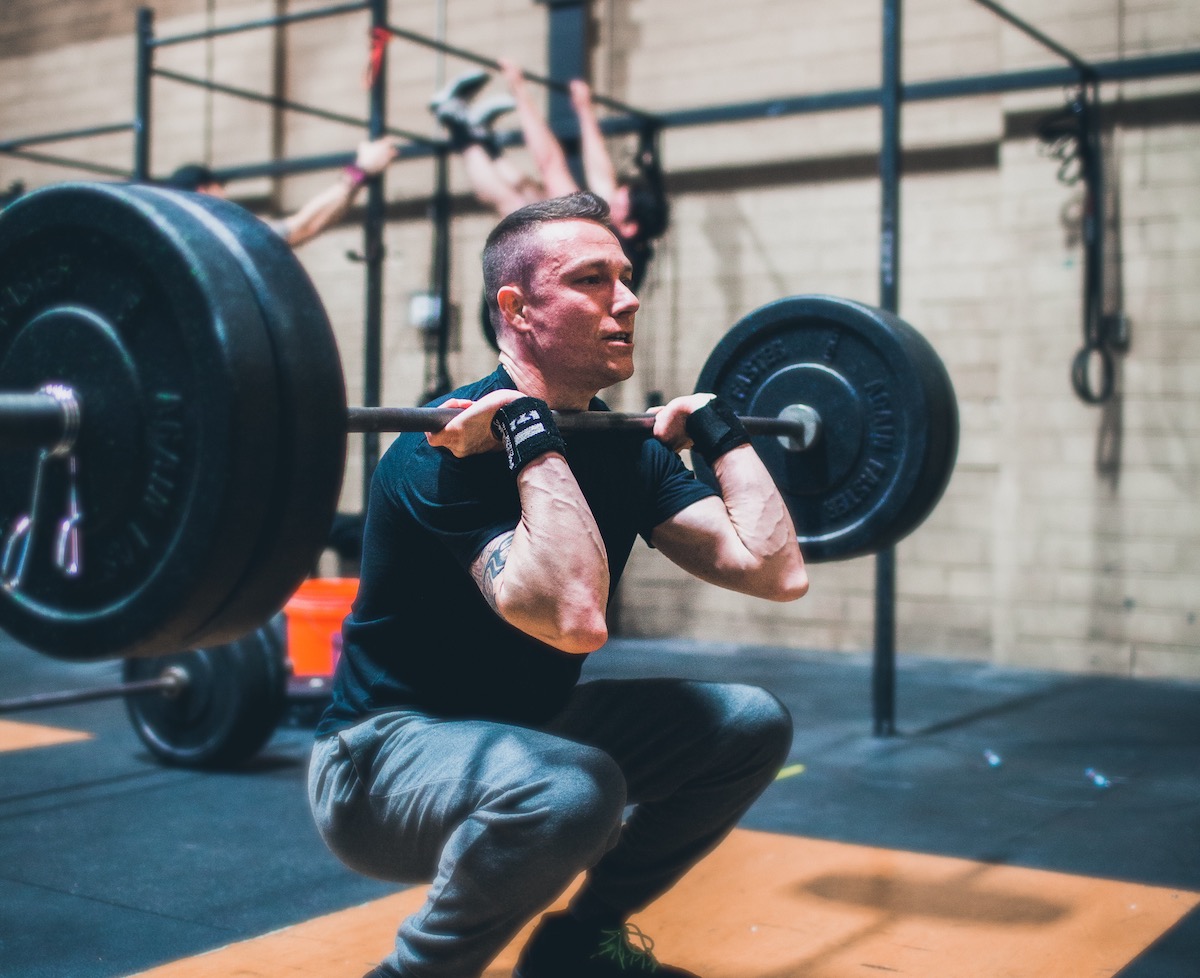
Hawkins at CrossFit NHPST | Photo courtesy of Hawkins
Aging Officers — Should You Be Fit for the Job?
New Hampshire law-enforcement officers are required to pass the PAT every three years to keep their certification. It is the only state in the country to require ongoing fitness testing for all certified officers.
Some police chiefs are worried these standards are too intense and a barrier to officer retention. Due to COVID-19, police reforms, and the economy, not as many people want to become law-enforcement officers.
On Jan. 4, 2023, House Bill 113 was introduced to the New Hampshire House of Representatives under the Committee of Criminal Justice and Public Safety to repeal the three-year physical-fitness requirement for certified law-enforcement officers, as well as the penalty of decertification for not meeting the requirements.
Hinsdale Police Chief Charles Rataj told the House Criminal Justice and Public Safety Committee, “I would rather have a large, strong officer who just can’t do 20 sit-ups with me as opposed to no officer at all. Or I would rather have a detective lieutenant who’s outstanding at investigating sex offenses, and who is in her mid-to-late 40s and just can’t run a mile-and-a-half without hurting her hips.”
Hawkins, the Director of the New Hampshire Police Standards and Training Council John Scippa, and the council members did not feel the same. Hawkins and Skipper testified at a public hearing on Feb. 9, 2023.
“We didn’t want to lower any of the standards. … How can we get rid of a standard that directly affects a person’s wellness?” Hawkins said. “From a personal experience: We get a call. ‘My grandmother wandered off. She has dementia.’ … In their minds, they call the police … (and) who do they want to show up? They want Superman or Superwoman. You never live up to your level of expectation, you live up to your level of training.”
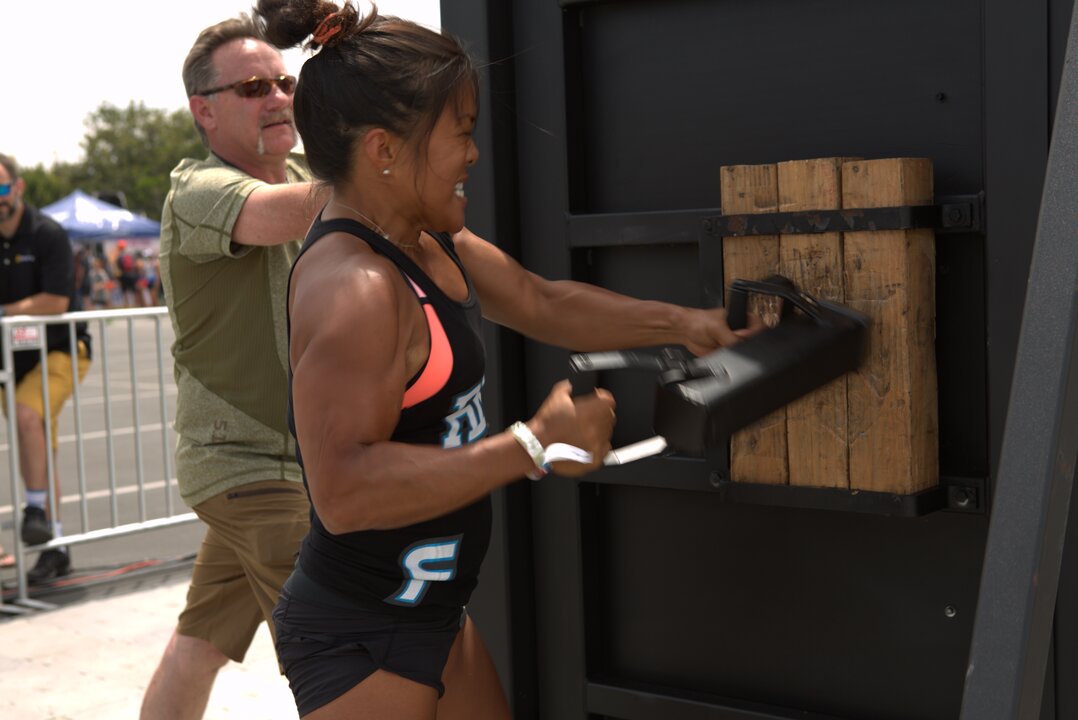
Law-Enforcement Challenge at the 2013 CrossFit Games
The physical health of a law-enforcement officer is vital to the protection of the officer and the community. Aging doesn’t mean it becomes less important for an officer to perform the physical demands of their job.
Yes, as we age, we lose fitness capacity. “But if we do train hard and intelligently, we can abate that loss even if we can’t eliminate it completely,” says Lon Kilgore in “Aging, Performance, and Health.”
If police officers are training correctly, their bodies should be able to keep up with the physical demands of their jobs.
On Jan. 3, 2024, The House voted to kill the bill.
Growing CrossFit in Police Academies Across the Country
Hawkins is now taking his experience running a CrossFit affiliate at the New Hampshire Police Academy and supporting Austin Bass (CF-L1) and Joe Masley (CF-L4) in their CrossFit affiliation efforts at the Metro Police Academy in Nashville, Tennessee, and the Boston Fire Departments providing data that proves the efficacy of CrossFit and mentoring them through the process.
For more than two decades, CrossFit has been curing chronic disease: obesity. Type 2 diabetes. Hypertension. But for law enforcement, it’s doing all that and more. It’s providing an essential source of total wellness to improve the safety of officers and the community.
Mental Health Resources For Officers
Police officers are more likely to die by suicide than in the line of duty, and law-enforcement officers have a 54% increase in suicide risk compared to the civilian population.
Here are a few resources officers can utilize to enhance safety and wellness in addition to CrossFit training:
- Valor for Blue: The VALOR Officer Safety and Wellness Program is dedicated to preventing injuries to and deaths of law-enforcement officers and the people they serve, and improving the health and resilience of officers.
- SAFLEO: SAFLEO’s mission is to prevent suicides among law-enforcement officers. “We are here to raise awareness and smash the stigma of seeking help.”
If you or someone you know is struggling with suicidal thoughts, call the suicide and crisis hotline at 988 or text BLUE to 741741.
ABOUT THE AUTHOR

Kelley Laxton is a sports writer and editor for CrossFit, LLC. Graduating from the University of Colorado Boulder with a degree in journalism and sports media, she has become passionate about promoting women in sports through her writing. Kelley has previously written for Her Sport, the first women’s sports magazine in Ireland, and continues to share the stories of strong women in the Sport of Fitness. She currently lives in Ottawa, Ontario, Canada, and enjoys her morning CrossFit class at CrossFit NCR.
Comments on CrossFit and Law Enforcement: A Pathway to Wellness
Fantastic resource. I am doing all I can and could use some help convincing the local PD to join us at our affiliate. I’m offering crazy discounts and specific class times just for the officers. The resistance is both financial and fear of lack of participation. The cost is less than a rounding error for their budget and participation will rise in time and if the PD picks up the discounted expense.
Any help or advice you may have found through your research for this great article would be hugely appreciated.
Dave Finlay 734-578-6754
Hi Dave, I’m the Head Coach at NYPD CrossFit. I’ll reach out to chat.
Hi Dave, I’m the Head Coach at NYPD CrossFit. I’ll reach out to chat.
CrossFit and Law Enforcement: A Pathway to Wellness
3